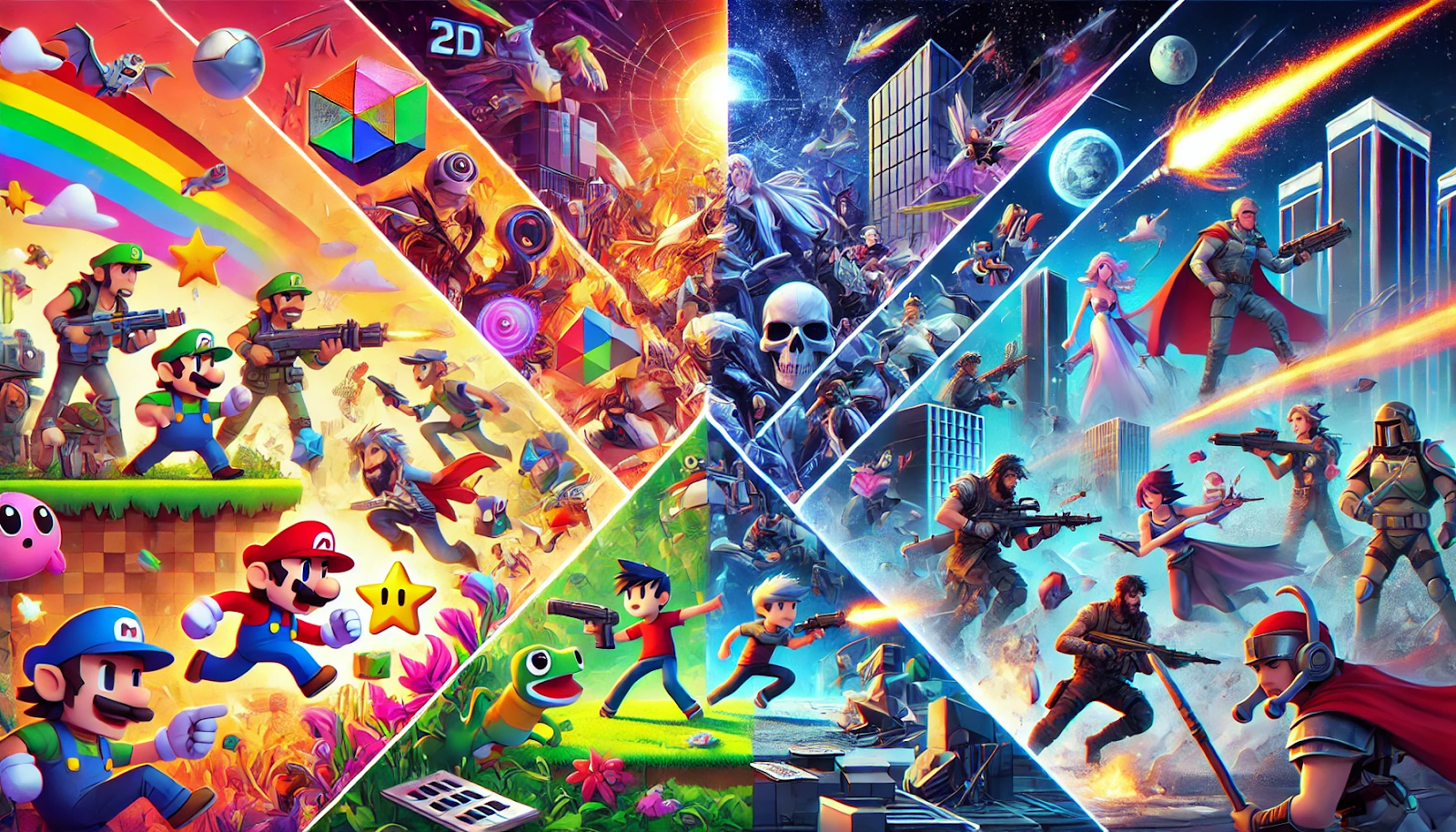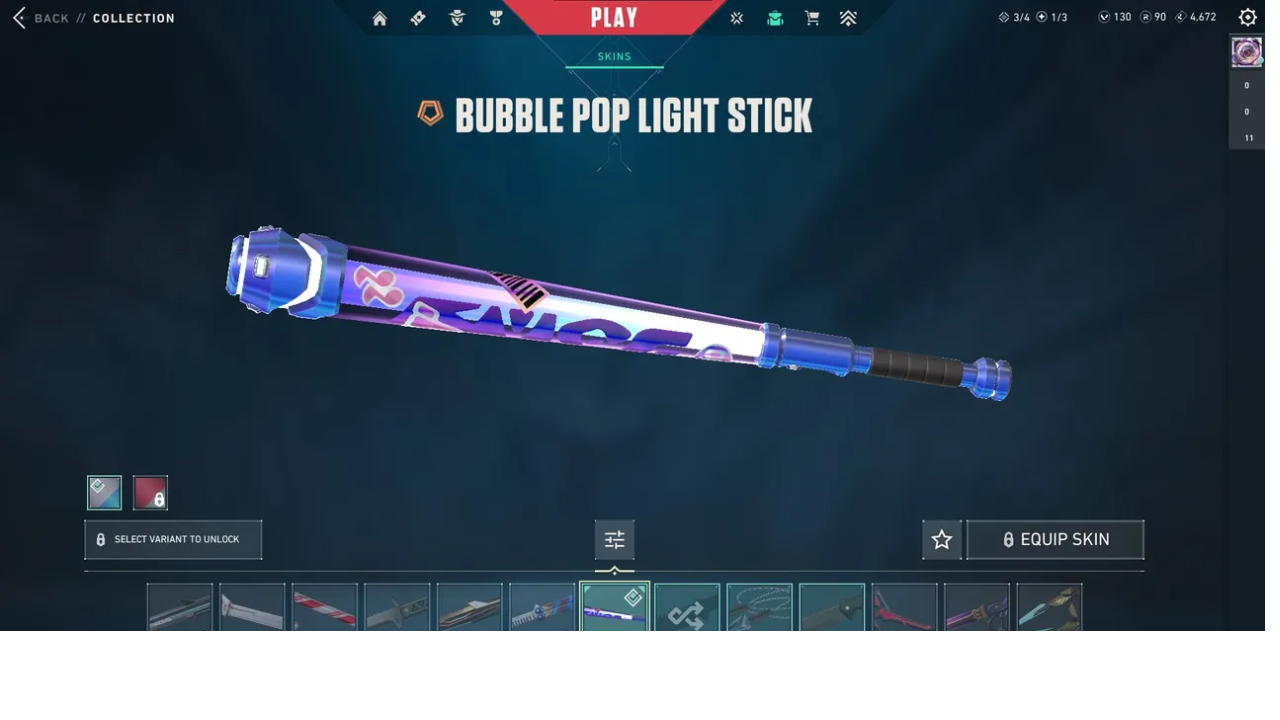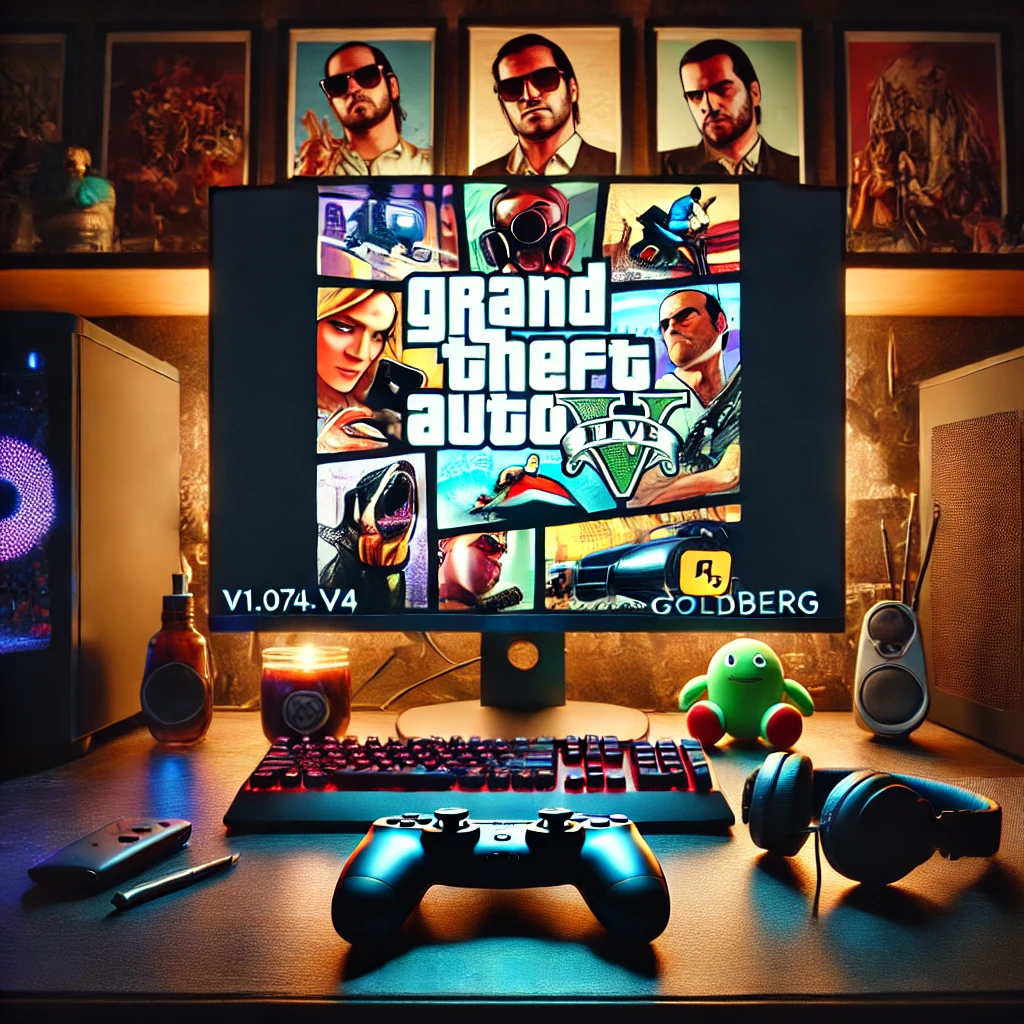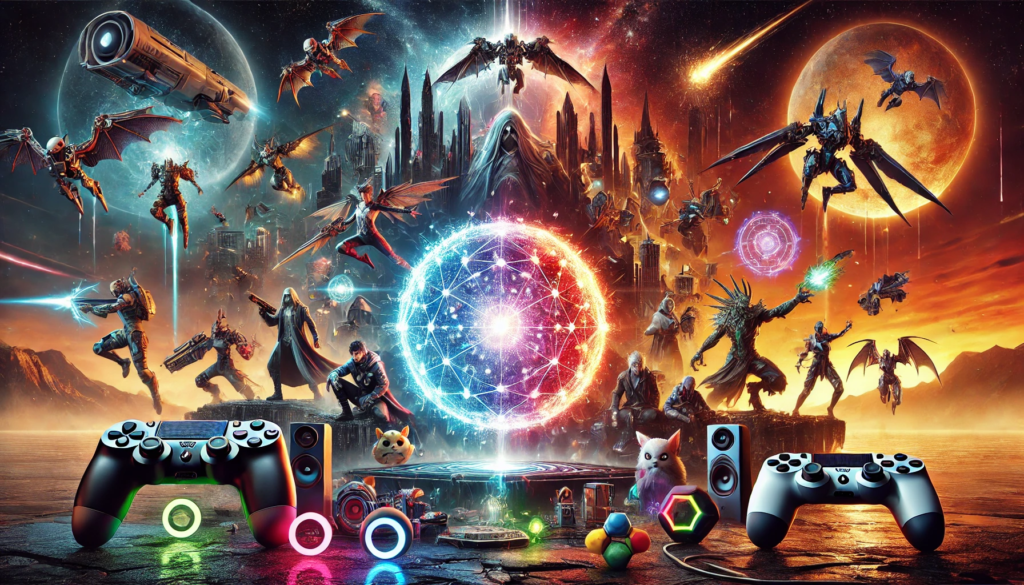Exploring the Role of 2D and 3D Game Art in Game Genres
In video games, art is the foundation upon which engaging, immersive, and unforgettable experiences are built. Whether it’s the simplicity of 2D sprites or the complex intricacies of 3D models, game art plays a crucial role in defining the feel and identity of a game. As the gaming industry evolves, 2D and 3D art integration continues to shape different game genres, enhancing gameplay, narrative, and overall player immersion. In this article, we’ll explore how 2D and 3D game art influence various game genres and how 2D game art and 3D game art services contribute to the development process.
The Role of 2D Game Art in Different Genres
Platformers and Puzzle Games
Platformers are one of the most iconic genres where 2D art shines. Games like Super Mario or Celeste rely heavily on 2D sprites and environments to create distinct visual styles. The simplicity of 2D art in platformers allows for fluid animations and precise control of the gameplay mechanics. Character designs, backgrounds, and obstacles are all rendered in 2D, allowing the player to interact with the game world easily. Puzzle games, too, benefit from 2D art as it creates clean, simple visuals that don’t overwhelm the player, focusing instead on problem-solving.
Mobile and Indie Games
2D art is often the preferred choice for mobile and indie games due to its lower production cost and more straightforward implementation. Games like Angry Birds and Monument Valley rely on vibrant and dynamic 2D art to create visually appealing experiences without requiring the complexity of 3D rendering. This simplicity allows for a more approachable gameplay experience, which is especially important for casual players.
Visual Novels and Strategy Games
Visual novels and strategy games use 2D art to tell compelling stories and present detailed, expressive character designs. In visual novels, 2D game art is used for character portraits, backgrounds, and memorable scenes, often designed to evoke strong emotions. In strategy games like Fire Emblem or XCOM, 2D art brings the game’s maps, units, and interfaces to life with clear and visually accessible designs.
The Role of 3D Game Art in Different Genres
Action, Adventure, and Open-World Games
3D game art became integral to action and adventure genres as the gaming industry progressed. Open-world games like The Witcher 3 or Red Dead Redemption 2 rely on highly detailed 3D environments and characters to create vast, immersive worlds. 3D models and textures enable these games to build rich landscapes that players can freely explore. The ability to move through these environments in three dimensions increases the player’s sense of agency, adding to the excitement and adventure.
Action games like Assassin’s Creed also use 3D art to create fluid combat sequences and realistic character animations. The detailed 3D models allow for advanced combat mechanics, such as dodging, climbing, and executing complex moves, which would be difficult to achieve with 2D art.
First-Person and Third-Person Shooters
The shooter genre is where 3D art comes to life, offering high-fidelity visual effects, realistic gunplay, and immersive environments. Games like Call of Duty and Overwatch use 3D character models, weapons, and environments to provide a visually engaging combat experience. The depth and realism of 3D art enable developers to create fast-paced, action-packed environments where players can engage in dynamic gameplay.
Simulation and Sports Games
Simulation games such as The Sims or FIFA benefit from 3D art’s ability to create realistic avatars, stadiums, and environments. The 3D art allows for character customization, lifelike animations, and immersive environments that make the player feel genuinely in control of the game world. In sports games, 3D models of players, stadiums, and physics-based mechanics add depth to the gaming experience, providing a level of realism players crave.
VR and AR Games
Virtual reality (VR) and augmented reality (AR) games heavily rely on 3D art to create immersive, lifelike environments. The spatial depth and 3D models enable players to engage with the game in real time, offering a fully interactive experience. In VR games, the 3D art must be meticulously designed to create realistic environments that respond to the player’s movements.
Combining 2D and 3D Art for Hybrid Experiences
While 2D and 3D art often dominate specific genres, numerous games blend the two for a hybrid experience. Many indie games combine 2D art for characters and environments with 3D art for interactive elements, creating a unique visual style. A great example is Octopath Traveler, where 2D sprites and 3D backgrounds are used together to create a nostalgic yet modern gaming experience.
In some cases, 3D art is used for the game world, while 2D art is used for user interface elements, character portraits, or cutscenes. This fusion allows developers to use both art styles to enhance gameplay and narrative, offering a balance of simplicity and complexity.
The Impact of 2D and 3D Art Services on Game Development
The expertise of a 2D game art and 3D game art services provider is crucial to ensuring that the game’s visual aspects align with the developers’ overall vision. Skilled artists use the latest tools and techniques to create assets that are not only visually appealing but also optimized for performance across various platforms. Whether it’s crafting stylized 2D assets or realistic 3D models, professional art services ensure that the game looks polished and consistent.
A game development company in the UK specializing in 2D and 3D art services can help bring your game’s concept to life, offering various services from character design, environment art, animations, and more. Their expertise can streamline the development process, saving time and resources while ensuring the art enhances the gameplay experience.
Conclusion
In conclusion, 2D and 3D game art each have distinct roles in designing various game genres. While 2D art remains vital for casual, mobile, and puzzle games, 3D art is essential for creating expansive, immersive worlds in action, adventure, and simulation games. The choice between 2D and 3D game art often depends on the specific needs of the genre, the gameplay mechanics, and the desired player experience.
By integrating the right mix of 2D and 3D art, game developers can craft visually stunning worlds and compelling gameplay experiences that captivate players. Partnering with a 2D game art and 3D game art services provider ensures that the art design aligns perfectly with the game’s mechanics and narrative, ultimately enhancing the game’s overall quality.







Post Comment